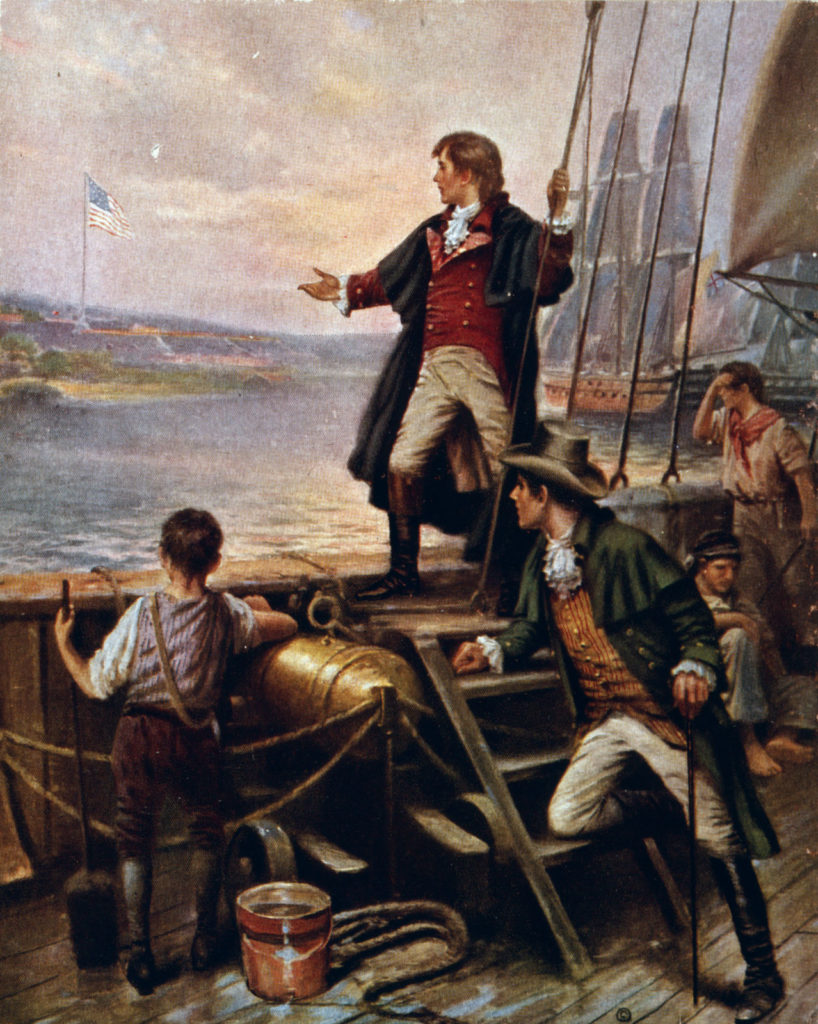
SEPTEMBER 13-14, 1814
British ships bombarded Fort McHenry, an attack that inspired “The Star Spangled Banner”
Francis Scott Key, a 35-year-old American lawyer, boarded the flagship of the British fleet on Chesapeake Bay to discuss the release of a captive friend. Key and his friend were released but were kept aboard the British ship due to their knowledge of the impending Battle of Baltimore at Fort McHenry. Key watched the battle unfold from eight miles away. Inspired by his view of the battle as the American flag was raised in victory, Key wrote the poem, “Defence of Fort McHenry,” which was set to a popular British tune, eventually becoming “The Star Spangled Banner.”
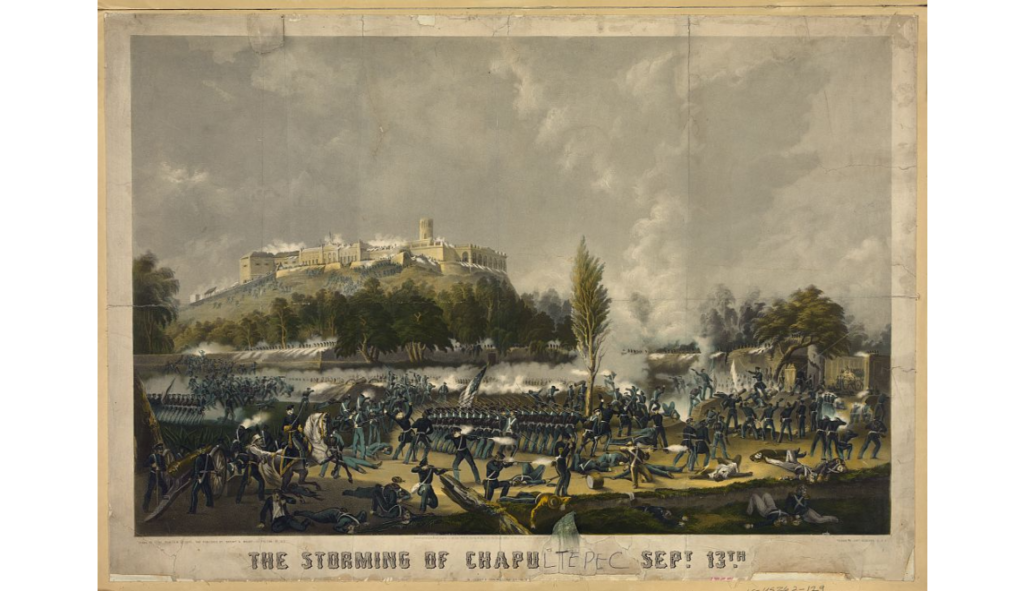
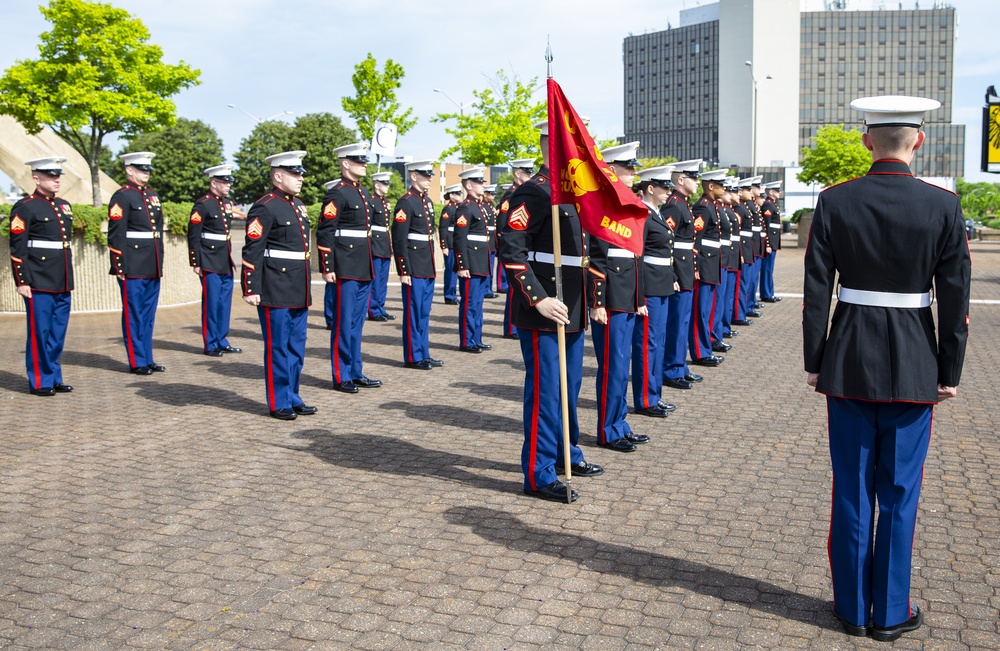
SEPTEMBER 13, 1847
The Battle of Chapultepec Castle
On September 13, 1847, U.S. Major General Winfield Scott prepared his troops for the assault on Chapultepec Castle, the last obstacle preventing the U. S. Army from capturing Mexico City, Mexico. Scott knew that the capture of Mexico City meant a United States’ victory in the Mexican-American War. Chapultepec Castle was a formidable fortress with 12-foot-high walls, seated atop a 200-foot-high hill, and defended by General Nicolás Bravo,1,000+ troops and 13 cannons. Many would lose their lives in the assault, but the victory was paramount. After shelling the fortress for a full day, Gen. Scott ordered three divisions led by Maj. Gen. Gideon Pillow, Brigadier General William Worth, and Brigadier John Quitman to attack the castle from the west and south. With the help of several ladders, the U.S. troops scaled the wall and took the castle by 9:30 a.m. From there, the troops marched on Mexico City forcing Mexican General Antonio López de Santa Anna and his troops within the city to flee in the night. By the morning of September 14, the battle had been won and both Chapultepec Castle and Mexico City were under U.S. control.
The Battle of Chapultepec had a considerable impact on the U. S. Marine Corps. By the end of the battle, approximately 90 percent of the Marines who fought to take the castle were killed in action. In memory of their service and sacrifice, the Marine Corps included a reference to the battle in the “Marines’ Hymn.” In the song, the verse mentioning the “Halls of Montezuma,” refers to the capital of the Aztec Empire, Tenochtitlán, which later became Mexico City. The Marines also added a scarlet stripe down the leg of their uniform trousers representing blood shed by Marines to take Chapultepec Castle. Today, on the 174th anniversary of the Battle of Chapultepec, we remember and honor the soldiers who fought to take Chapultepec Castle and Mexico City, bringing an official end to the Mexican-American War.
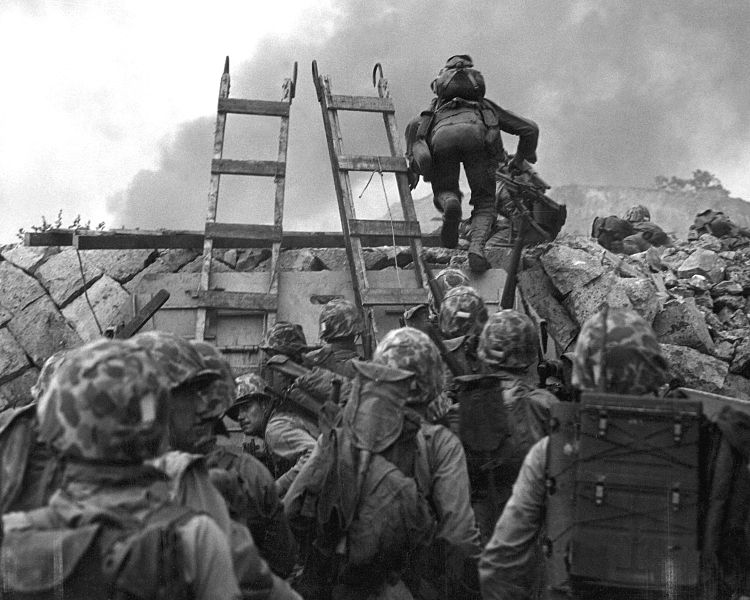
SEPTEMBER 15, 1950
Operation Chromite begins
In September of 1950, the United States and United Nations found themselves embroiled in a war between the communist-supported Democratic People’s Republic of (North) Korea, and the western supported Republic of (South) Korea. Seoul, the capital of South Korea, had fallen in June, forcing the South Korean soldiers to retreat and regroup with their western allies at the Pusan Perimeter. After regrouping with their allies, the South Korean and United Nations forces – commanded by U. S. General Douglas MacArthur – halted the North Korean advance.
With the North Korean advance halted, MacArthur decided the time was right to enact his unconventional plan designed to break North Korean supply lines and reclaim Seoul. This plan, codenamed Operation Chromite, involved an amphibious landing of American troops at Inchon, a port located on the west coast behind enemy lines. However, Inchon was not an ideal amphibious landing zone because of strong tides and a narrow channel. Despite initial hesitation from other American military leaders, Operation Chromite was approved and preparation began for the invasion. On September 15, the 1st Marine Division, with the aid of Admiral Arthur D. Struble’s fleet of 230 ships, landed in and seized Inchon. The Marines from the north and the Allied forces from the south worked together to cut off North Korean supply lines and force them back past the 38th parallel dividing North and South Korea. Today, on the 71st anniversary of Operation Chromite, we remember and honor the soldiers who risked their lives landing at Inchon port.
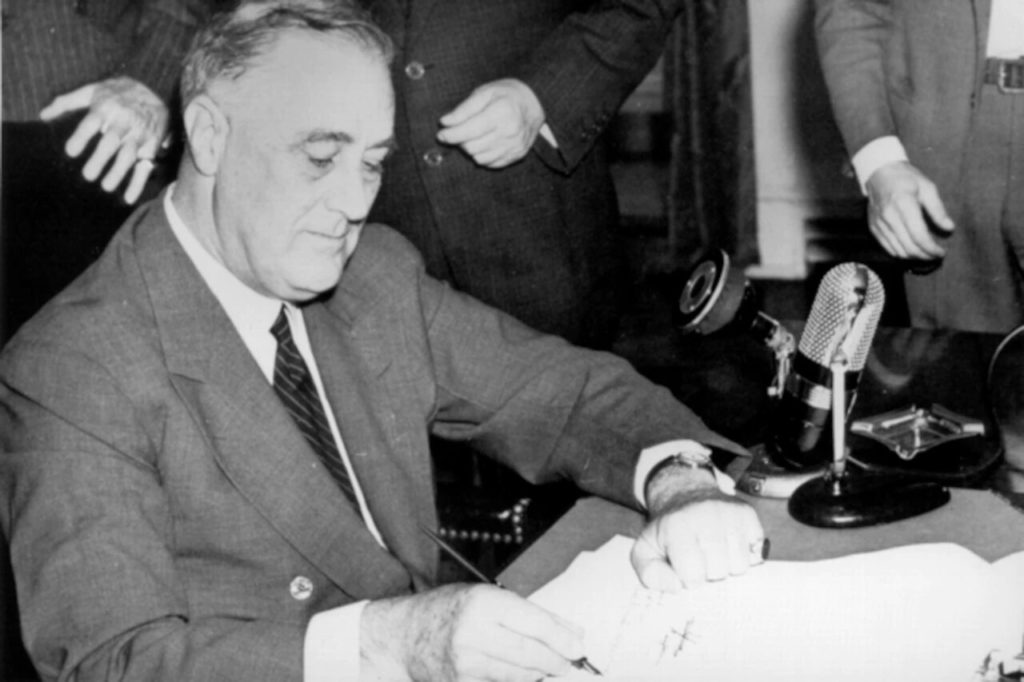
SEPTEMBER 16, 1940
The Burke-Wadsworth Act signed into law
Prior to the beginning of United States involvement in World War II, the size of U.S. military forces were vastly insufficient to take on the Axis powers. As tensions rose between U.S. Allies and the Axis powers, it was only a matter of time before the government, as well as the public, realized that involvement was inevitable. President Roosevelt and his advisors also recognized that the military force available at the time would need to be increased and could no longer rely on a purely volunteer force.
On September 16, 1940, President Roosevelt signed into law the Burke-Wadsworth Act. Also known as the Selective Training and Service Act, this piece of legislation was the first peacetime draft in U.S. history. To prepare U.S. forces in the event of involvement, this act required all men between the ages of 21-45 to register for the draft. This act remained in place throughout the duration of WWII and was not abolished until July 1, 1973.
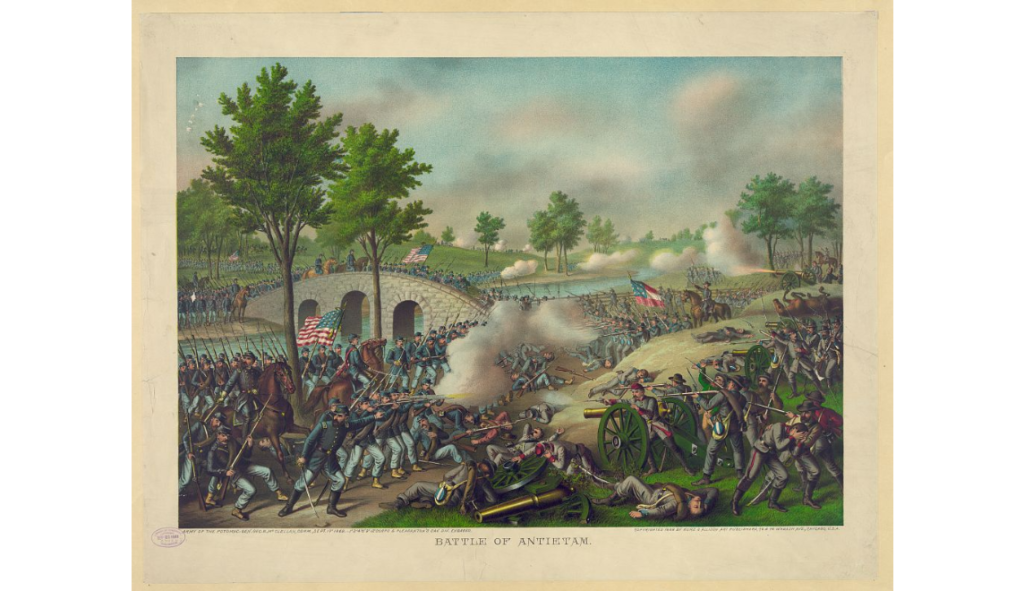
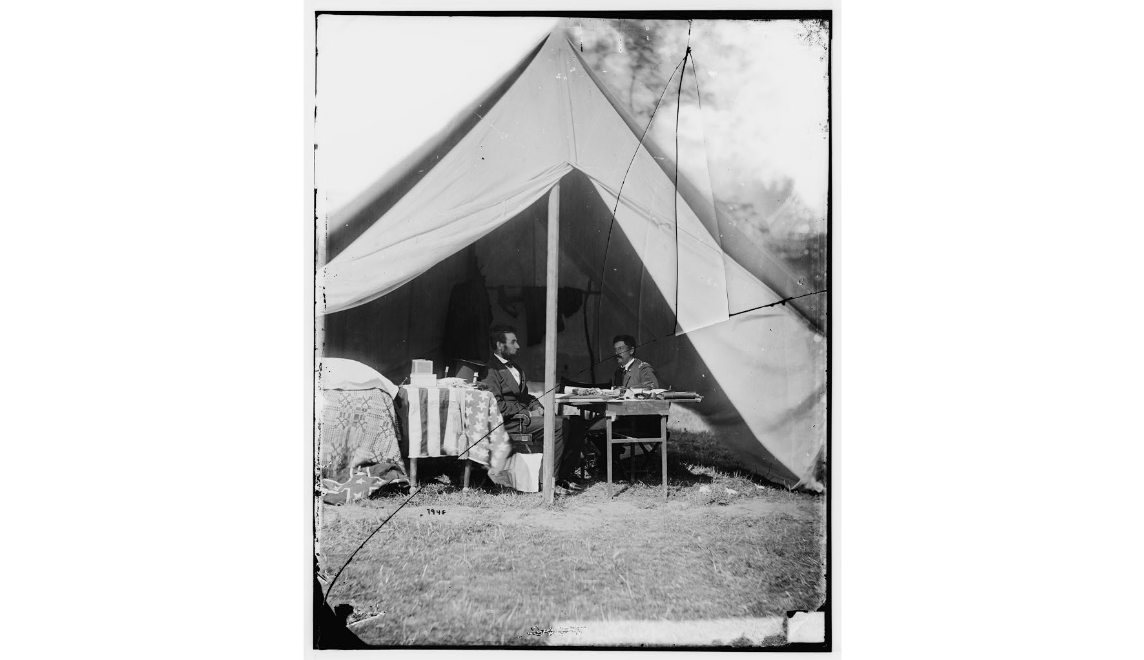
SEPTEMBER 17, 1862
The Battle of Antietam
By the summer of 1862, Union forces found themselves demoralized after repeatedly being defeated by Confederate forces. Public opinion of the war in the Union states was wavering, giving the Confederate General Robert E. Lee the prefect opportunity to strike. Lee’s plan was to march his troops northward into Maryland and claim a decisive victory in Union territory which would have secured the Confederate State’s victory in the Civil War. However, his plans were discovered by two Union soldiers and reported to Major General George B. McClellan who moved his forces to intercept Lee. On the morning of September 17, 1862, the Battle of Antietam began when Union and Confederate forces met at Antietam Creek. Thousands of soldiers marched to their deaths in what would become known as the deadliest one-day battle in American history. By nightfall, Union and Confederate soldiers wandered the battlefield collecting their wounded and dead. Of the approximately 132,000 soldiers who fought at the Battle of Antietam, there were approximately 23,000 casualties. The battle officially ended the next morning when Gen. Lee fled south towards Virginia with his remaining men. The Union had won, but at a great cost.
While facts about the Battle of Antietam are well documented, a true account of the battle can only be discerned by reading the firsthand account left behind by soldiers and medical professionals. One such letter is on display within the Service and Citizenship Gallery at the National Veterans Memorial and Museum. In the letter, Lieutenant Colonel Wilder Dwight of the 2nd Massachusetts Infantry Regiment writes to his mother on the morning of September 17 to inform her that he is engaging the enemy to support Major General Joseph Hooker in an assault through the cornfield. This would be the last letter Dwight would ever send his mother. As he lay wounded on the battlefield, he wrote his last message to his family informing them that he was wounded and likely going to die. Despite his injuries, Dwight wrote that he believed he died a victor and remarked that he had faith that God would defend the United States of America. Dwight, along with thousands of other soldiers, fought and died for their nation 159 years ago to this day. Today, we honor and remember their service and sacrifice to our nation.
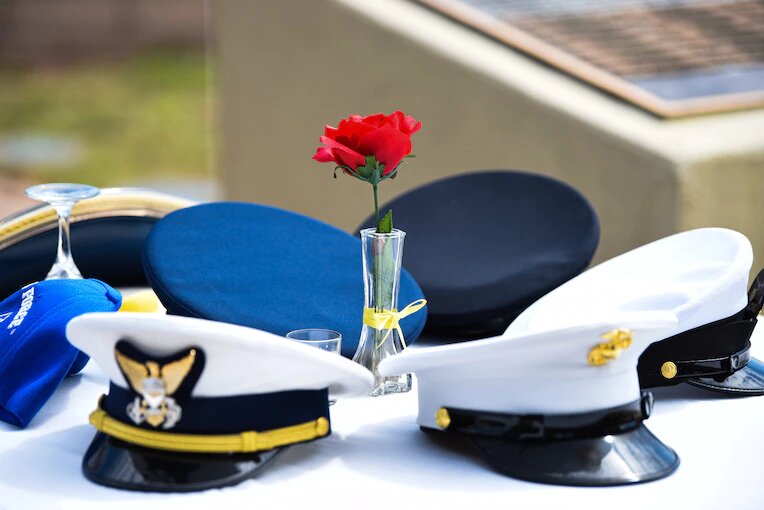
SEPTEMBER 17
POW/MIA Recognition Day
On September 17, we pay tribute to the lives and contributions of more than 83,000 Americans who are still listed as Prisoners of War or Missing in Action through the recognition of National POW/MIA Recognition Day. Since its establishment in 1979 by President Jimmy Carter, POW/MIA recognition day has been observed every year on the third Friday in September. Though it is not a federal holiday, it is one of six national days of observance during which the POW/MIA flag can be flown over significant national landmarks and government buildings. This flag serves as a symbol of continuing concern for those missing or taken prisoner in prior military involvement.
This day is observed throughout the nation through various ceremonies and events held to spread awareness that service members are still missing in action, from World War II through the Gulf Wars. It also serves as a reminder that the Department of Defense’s POW/MIA Accounting Agency continues to search for the missing.
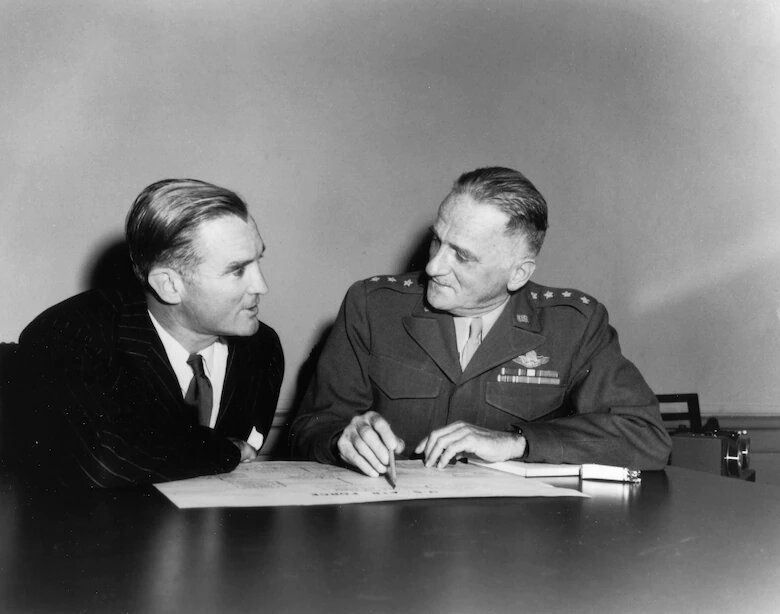
SEPTEMBER 17
U.S. Air Force became an independent service
Since the initial introduction of aircraft into the armed forces in 1909, air power has been an essential tool in the advancement of United States military operations. However, until September 1947, the Air Force existed under a series of designations within the Army. It was neither separate nor independent from the Army, despite operating with a markedly different mission.
As the Army Air Force became an increasingly independent and autonomous sector throughout the course of WWII, it was hard to deny that creating an entirely separate force was the next logical step. Thus, on September 18, 1947, President Truman signed the National Security Act of 1947, declaring the U.S. Air Force to be an independent service equal to the U.S. Army and U.S. Navy. On this date, Army air bases were re-designated as Air Force bases, new uniforms and insignias were distributed, and a separate command structure was established to suit the new branch.
Today, the total strength of all sectors in the Air Force amounts to just over half a million people and is now a prevalent force in the U. S. military.



